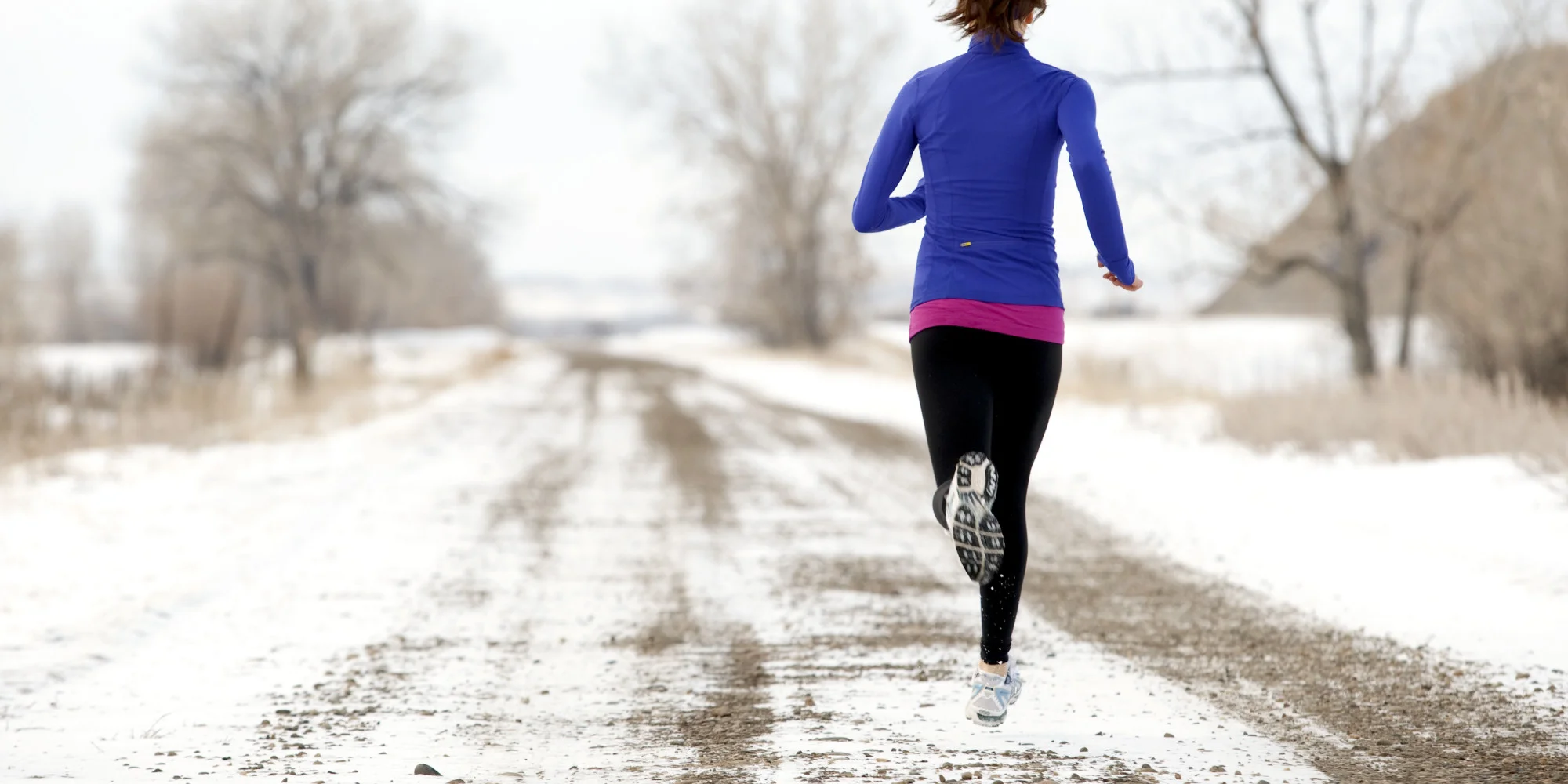Running in winter can be a daunting prospect for many reasons: cold winds, slippery surfaces, and fewer daylight hours all make exercise outside more difficult. These are all realities of Irish winters, and the majority of you don’t want to see your exercise regimens interrupted for a quarter of the year. But there is more to running in winter than simply plucking up the motivation to do so. Below, you can find a number of steps that will help make running in winter safer, easier, and more comfortable.
Attire
You may be tempted to pile on a few extra layers so that you cannot feel the cold, but of course this is counterintuitive, as you will heat up once you get going. What really matters is covering your body and making sure that what you wear provides proper ventilation. It is a common misconception that the majority of our body heat is lost through our heads. In reality, the amount of heat a body-part loses is more or less proportional to that body-part’s surface area. You should cover up as much of your body as you can, but wear clothes that are a little loose-fitting or breathable. This will help keep your body at a reasonable temperature, as you don’t want to retain all the excess heat you generate while exercising. It is also important to choose clothes that will be highly visible at night, and to remember that even if it is bright when you leave, it may be dark before you get back.
Our hands and faces are the most exposed parts of our bodies, so it is important to make sure these are properly covered. Failure to do so can be very painful. Many people choose to forego gloves in exchange for the use of their smartphones. However, there are many inexpensive gloves available these days that will allow you to keep your hands warm and still use your phone, so if you’re the type of person who likes to run to music, these may be a solution. As for the face, a balaclava would give you maximum coverage. If you find it difficult to breathe while running in a balaclava, it is important to cover your ears, and run with the wind where possible, to avoid windburn.
Finally, proper footwear is essential. Not only will you need shoes that provide proper grip against the wetter surfaces and black ice, it is also imperative that you keep your feet as dry as possible. Keeping your feet in cold, damp shoes for extended periods of time can be very harmful. Apart from running in waterproof shoes, wearing two pairs of socks can help keep your feet dry & warm. An added advantage to this is that it reduces the likelihood of blisters forming.
The Run
Your typical regimen does not apply to running in winter, and will have to be adjusted slightly. Your warm-ups should be done indoors, as it is an easier temperature transition for your body to make. This is both more comfortable and safer for you, as you are less likely to pull a muscle compared to trying to get your body from cold to warm in a short period of time. Running up & down the stairs or using a skipping rope are good alternatives to the routine you use in the warmer months.
Your goal when running in winter should not be to reach a certain speed, or cover a certain distance in a given time. Instead, you should aim to run at a lower speed for a longer period of time than you normally would. This not only puts less stress on your body, but also makes it less likely that you will injure yourself. Be conscious of using shorter strides and keeping your feet closer to the ground.
The last ten minutes of your run should transition from a slow jog to a fast walk. Like the warm-up, your post-run stretches should be done indoors, as the temperature difference will be less of a shock to your body. It will be easier and more comfortable for you, and you won’t be tempted to do your stretches improperly so you can get back inside.











